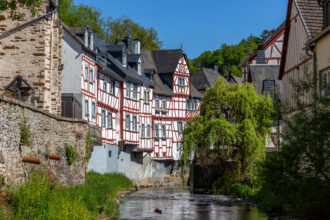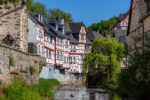A somewhat hidden attraction in Den Bosch, the capital of the Dutch province of North Brabant, which has a beautifully preserved medieval city center, is the Ruische Poort, also known locally as the Pastoorspoort. This red brick gate, which dates from around 1545 and is located opposite the Visstraat, originally served as the entrance to the refuge of the Augustinian monastery of Marienhage in Woensel near Eindhoven. In 1629, the church properties were confiscated and purchased by Johann Ruisch after the end of the Thirty Years’ War in 1648. He was in the service of the States General as Ordinary of the Muster of the Garrisons of Den Bosch and its forts. Ruisch had bought the building from the prior of the monastery. However, the purchase of the building was not recognized by the provincial government, which is why Ruisch had to buy it back from the administrator Johan Stappaerts. The gate is also named after Johan Ruisch. When Johan Ruisch died in August 1657, his son Hendrick Ruisch, who was secretary of Den Bosch from 1649 to 1678, became the new owner. When he died, he left his children with a large amount of debt. The children were unable to pay this off, so they were evicted from the house. In 1747, the entire area became the property of the priest Lambertus Hoeks. The former refuge became the rectory of the parish of Achter de Tolbrug, which later became the parish of St. Peter. Until 1923, the property was owned by the St. Peter’s parish, which sold it to the municipality after receiving approval from Bishop Diepen on October 10, 1923. The gate was restored in 1927, and a niche with a statue of Mary was added above it. In 1935, the gate and the street officially became municipal property and have since been considered a hidden gem of Den Bosch.














